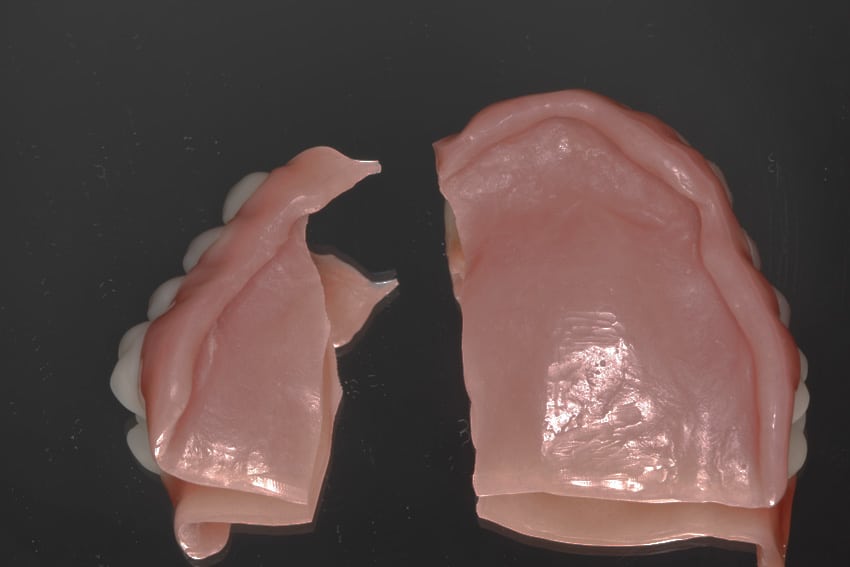Maintaining a removable prosthesis
All our maintenance tips and recommendations

- Wash the denture out of the mouth after each meal with liquid soap and a denture brush
- Remove the prosthesis overnight and leave it dry in an ad hoc container
- If you wish to keep the prosthesis overnight, it is essential to dry it once a day with a hair dryer
- In the case of reduced dexterity or a new prosthesis, it is preferable to protect the washbasin with a cloth to limit the risk of fracture of the prosthesis should it slip from the hands

Repair
A prosthesis is fragile. If it falls, it can easily break.
If a prosthesis cracks or breaks, it can be repaired.
Repair involves clinical and laboratory costs, as the prosthetic technician performs part of the work. The patient must leave the broken prosthesis in place for a few hours to a few days, depending on the type of repair required.

Relining
Over time, bone resorption progresses at a patient-specific rate in any edentulous area.
The loss of bone and gingiva beneath the prosthesis creates a void beneath the resin.
This can lead to a number of problems:
- instability and reduced prosthetic retention
- increased passage of food under the prosthesis
- fracture of the prosthesis
To reduce the above risks and discomforts, relining should be considered.
Relining consists in replacing the material between the denture intrados and the new gingival surface to fill the gap created.
Relining is carried out by the prosthetic technician in his laboratory, using an impression taken in the office by the dentist. There is therefore a time lag between taking the impression and placing it in the patient’s mouth. The time the patient remains without a prosthesis can vary from a few hours to a day.
In some cases, a temporary relining (white paste on the inner side of the prosthesis) may be carried out.
Modification
As time goes by and the dentition evolves, it may be necessary to extract some of the remaining teeth. With this type of appliance, it's possible to modify the existing prosthesis to suit the new oral situation. A technician's intervention is often essential, and the patient is returned to his or her old, modified prosthesis a few hours or days later.